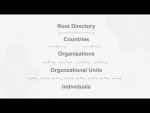LDAP
Product Details
Website
Overview
LDAP, the Lightweight Directory Access Protocol, is a mature, flexible, and well supported standards-based mechanism for interacting with directory servers. It’s often used for authentication and storing information about users, groups, and applications, but an LDAP directory server is a fairly general-purpose data store and can be used in a wide variety of applications.
It’s a standards-based protocol that sits on top of TCP/IP and allows clients to perform a variety of operations in a directory server, including storing and retrieving data, searching for data matching a given set of criteria, authenticating clients, and more. The standard TCP ports for LDAP are 389 for unencrypted communication and 636 for LDAP over a TLS-encrypted channel, although it’s not uncommon for LDAP servers to listen on alternate ports for a variety of reasons.
It’s a standards-based protocol that sits on top of TCP/IP and allows clients to perform a variety of operations in a directory server, including storing and retrieving data, searching for data matching a given set of criteria, authenticating clients, and more. The standard TCP ports for LDAP are 389 for unencrypted communication and 636 for LDAP over a TLS-encrypted channel, although it’s not uncommon for LDAP servers to listen on alternate ports for a variety of reasons.
Support Options
- Phone
Districts
This list is compiled annually through our web surveys, internet research, and phone interviews with California school districts.
School Districts in California that use LDAP*







